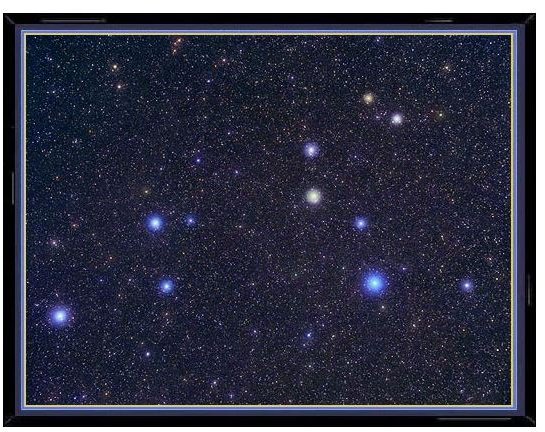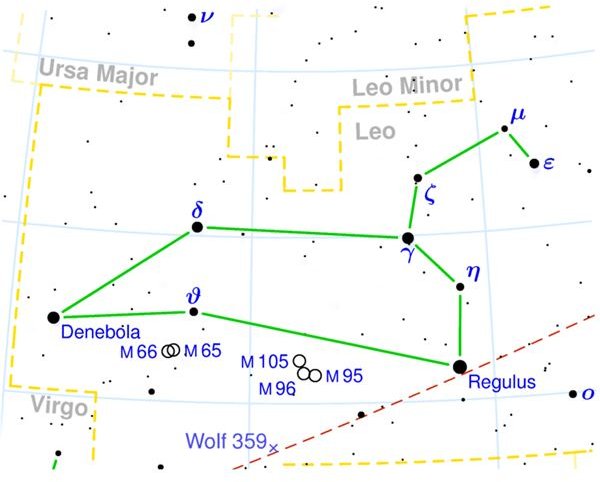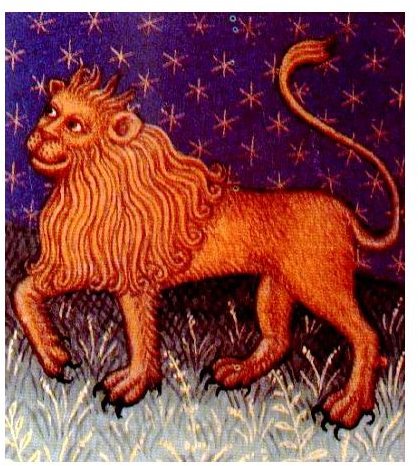Facts About the Constellation Leo
Images
Left: A mythological image of Leo. (Image credit: Fulkanelli at Wikimedia Commons u__nder a GNU Free Documentation license, https://en.wikipedia.org/wiki/File:Leo2.jpg)
Below right: This photo of the constellation Leo shows, enlarged in their true color, the main “naked eye” stars that make up the shape of the constellation. Image courtesy of https://www.scienceandart.com

The Facts
1. Image of: A lion

2. Right ascension: 11h
3. Declination: +15 degrees
4. Genitive: Leonis
5. Latitudes visible at: Between +90 degrees and -65 degrees
6. Time best visible: At 21:00 in April
7. Area of sky covered: 947 square degrees
8. Rank in constellation size: 12th
9. Stars: Alpha Leonis (Regulus), Beta Leonis (Denebola), Gamma Leonis (Algieba), Theta Leonis (Chort), Delta Leonis (Zosma), Kappa Leonis (Al Minliar al Asad), Lambda Leonis (Alterf) and Omicron Leonis (Subra)
10. Other objects in the constellation: M65, M66, NGC 3628 (these three are also known as the Leo Triplets), M95, M96 and M105 galaxies.
11. Brightest star: Alpha Leonis (Regulus, with an apparent magnitude of 1.4)
12. Nearest star: Wolf 359 (7.78 light years away)
13: Meteor showers: Leonids (around mid November)
14. Mythology: In Greek mythology, Leo has been recognized as the Nemean Lion. It was placed in the sky after being killed by Heracles or Hercules in his first labour.
15. Position in the Zodiac: Fifth
16. Traits associated with Leo in astrology: creative, warm-hearted, enthusiastic, faithful, pompous, bossy, intolerant.
Above right: The symbol for Leo (Image credit: Tlust’a at Wikimedia Commons, https://en.wikipedia.org/wiki/File:Leo.svg, public domain.)
Below: A constellation map of Leo (Image credit: Torsten Bronger at Wikimedia Commons, https://en.wikipedia.org/wiki/File:Leo_constellation_map.png, GNU Free Documentation license.)

Amazing Facts
1. Extrasolar planet: A star in Leo, Gliese 436, has a planet revolving around it with a mass of about 22 times the mass of Earth.
2. Brightest Carbon star: IRC +10216, a carbon star in Leo, is the brightest star in the sky in the 10 μm wavelength band.
3. Binary star: Gamma Leonis, Algieba, is a spectacular binary star. It can easily be seen as a bright orange-red giant of 2.6 magnitude and a yellow giant of 3.8 magnitude with a small telescope.
4. Galaxy Superclusters: M96 group (Leo I group) is a group of galaxies from the Virgo Supercluster (the local supercluster). The Leo Cluster is one of the major galaxy clusters comprising the Coma supercluster.
References
1. https://en.wikipedia.org/wiki/Leo_(constellation)
2. https://en.wikipedia.org/wiki/Leo_(astrology)
3. https://en.wikipedia.org/wiki/The_Twelve_Labours
4. https://en.wikipedia.org/wiki/Leo_I_Group
